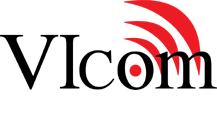The meeting concludes, and the CFO turns to you with a simple question: “What was the return on that $2 million we spent on upgrading our meeting rooms last year?” Can you answer with a dashboard of hard data showcasing productivity gains, cost savings, and increased real estate utilization? Or are you left with vague anecdotes about “better collaboration”?
Without a clear, data-driven model for calculating Return on Investment (ROI), technology budgets are often the first on the chopping block during fiscal reviews. It becomes impossible to justify past expenditures or secure funding for future innovation. Your IT organization risks being perceived as a cost center rather than a strategic value driver.
A Deeper Diagnosis
The fundamental problem is that most organizations only calculate half of the equation: the Total Cost of Ownership (TCO). They meticulously track expenses for hardware, software licenses, and maintenance contracts. However, they completely fail to measure the Return on Value (ROV)—the tangible and intangible benefits the technology delivers to the business. They are tracking costs, not impact.
This one-sided view leads to poor decision-making and technological stagnation:
- IT as a Cost Center: Without proof of value, IT is seen as an operational expense to be minimized, not a strategic asset to be invested in.
- Risk Aversion: Leadership, burned by past investments with no measurable return, becomes hesitant to approve new projects, clinging to outdated technology for fear of making another unquantifiable spend.
- Missed Opportunities: The true value drivers—like accelerated project timelines, reduced employee travel, and higher engagement—are never quantified and therefore never factored into strategic planning.
The VIcom Value-Based ROI Framework
To shift this conversation, organizations need a new framework for “Value-Based ROI” that measures impact on key business outcomes. This approach moves beyond simple usage statistics to quantify how technology makes the organization faster, smarter, and more efficient.
This entire concept is built upon a core VIcom pillar: Adoption is the Only True ROI. A tool that isn’t used has a negative ROI, regardless of its features. Therefore, our measurement framework is intrinsically linked to user adoption and its direct impact on business performance. We help you design systems with built-in analytics and work with you to build a compelling business case—one that speaks the language of the C-suite.
Metrics for Calculating True ROI
Moving beyond anecdotal evidence requires tracking the right Key Performance Indicators (KPIs). A robust ROI model incorporates metrics from multiple categories to paint a complete picture of value.
| Category | Metric | Calculation & Key Considerations |
|---|---|---|
| 1. Productivity Gains | Meeting Time Saved |
(Time saved per meeting start) x (Avg. employee cost per hour) x (# of meetings annually)
<br> Focus on reducing the “time-to-meet” from minutes to seconds with one-touch join capabilities. |
| Employee Efficiency |
(Hours saved per employee per week from streamlined workflows) x (Avg. employee cost)
<br> Research shows modern digital workplaces can save up to 8.2 hours per employee weekly. |
|
| 2. Cost Avoidance | Reduced Travel |
(Number of trips avoided via video conferencing) x (Avg. cost per trip)
<br> Studies show virtual collaboration can yield a 15-to-1 ROI through travel reduction alone. |
| Reduced IT Support Load |
(Reduction in meeting room-related helpdesk tickets) x (Avg. cost per ticket)
<br> Intuitive, reliable systems reduce troubleshooting calls, freeing up IT staff for strategic projects. |
|
| 3. Asset Utilization | Real Estate Optimization |
(Increase in utilization rate of previously underused rooms) x (Sq. footage cost)
<br> Analytics can reveal opportunities to reconfigure or consolidate physical space based on actual usage. |
| 4. Employee Experience | User Adoption Rate |
(% of target users actively using the new tools weekly)
<br> This is the foundational metric; if this is low, all other ROI is at risk. |
| Employee Net Promoter Score (eNPS) | Track changes in employee satisfaction and their willingness to recommend the company’s tech tools. <br> Engaged employees are up to 17% more productive. |
The VIcom Partnership
You can’t manage what you can’t measure. A data-driven approach to ROI transforms the technology conversation from one of cost to one of value. It empowers you to prove the success of your investments and make a powerful, undeniable case for future innovation.
Ready to design a collaboration strategy that delivers measurable returns? Schedule your free consultation with a VIcom expert today using the form below.

